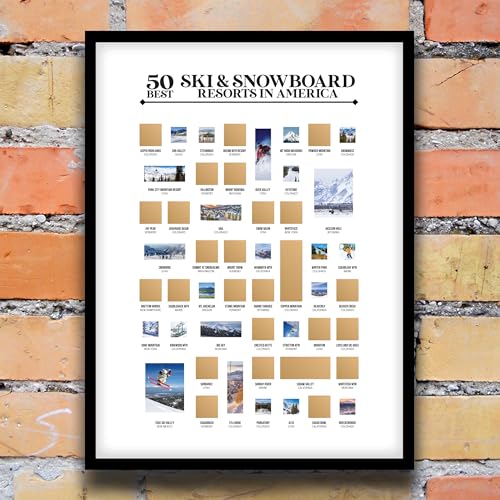When you hit the slopes, it’s easy to get caught up in the thrill of snowboarding. But did you know that many snowboarders and organizations are also passionate about protecting the wildlife that calls these snowy mountains home? From preserving habitats to supporting conservation projects, the snowboarding community is stepping up to make a difference.

You might be surprised how your favorite winter sport connects with efforts to keep forests, animals, and ecosystems safe. Whether you’re a seasoned rider or just starting out, understanding these initiatives can deepen your connection to the mountains and inspire you to join the movement. Let’s explore how snowboarding and wildlife protection go hand in hand to keep nature thriving for future generations.
The Intersection of Snowboarding and Wildlife Conservation
Snowboarding connects you to the mountains in a unique way, giving you firsthand experience of the fragile alpine environments that wildlife calls home. Understanding this connection helps you appreciate the role you play in protecting these habitats.
How Snowboarding Impacts Animal Habitats
Snowboarding affects animal habitats mainly through trail creation, noise, and occasional disruption of resting or breeding areas. Frequent riding near sensitive zones can disturb wildlife, especially species like mountain goats, lynx, and snowshoe hares. Using designated trails and respecting seasonal restrictions minimizes your impact and preserves critical spaces for animals. You reduce habitat damage when you avoid off-trail riding in fragile areas, especially during winter when animals conserve energy.
The Importance of Protecting Alpine Ecosystems
Alpine ecosystems support diverse species adapted to harsh conditions, relying on stable snowpacks and intact vegetation. Protecting these ecosystems maintains biodiversity and prevents soil erosion that can degrade water quality downstream. Your role in conservation helps sustain the natural beauty and ecological balance of the places where you ride. Supporting local environmental groups and participating in cleanups or restoration projects extends your impact beyond the slopes and ensures healthy mountain habitats for future snowboarders and wildlife alike.
Key Wildlife Protection Initiatives in the Snowboarding Community
Snowboarding goes beyond pure adrenaline; it connects you with nature’s fragile beauty. The community actively advances wildlife protection through smart practices and powerful partnerships that keep mountain habitats thriving.
Sustainable Resort Practices
Snowboard-friendly resorts prioritize eco-conscious operations that reduce impact on local wildlife. Many use energy-efficient snowmaking machines that cut water waste while preserving natural hydration cycles vital to alpine species. Trail design focuses on avoiding critical habitats, redirecting traffic away from nesting sites and animal corridors. Resorts often set seasonal trail closures during mating or hibernation periods to prevent disturbing sensitive wildlife. You’ll find more eco-friendly shuttle services and waste reduction programs fostering a cleaner mountain environment alongside your runs. These actions ensure your favorite slopes remain wildlife-friendly while keeping the snowboarding experience top-notch.
Collaboration with Conservation Organizations
Snowboarding groups team up with conservation nonprofits and land management agencies to protect mountain ecosystems. They participate in wildlife monitoring programs, reporting sightings and disturbances to help track species health. Volunteers join habitat restoration projects that replant native vegetation and remove invasive species threatening biodiversity. These collaborations also help develop educational campaigns that raise awareness among riders about respecting seasonal closures and minimizing noise pollution. By actively supporting these initiatives, you contribute to safeguarding the terrain so many alpine animals depend on, turning your passion for snowboarding into meaningful conservation action.
Innovations in Eco-Friendly Snowboarding Gear
You want your gear to perform on the slopes without costing the planet. Eco-friendly snowboarding gear uses cutting-edge materials and sustainable practices to reduce environmental impact while keeping you stoked for every run.
Materials That Minimize Environmental Footprint
You find gear made from recycled polyester, organic cotton, and plant-based fibers like hemp and bamboo increasingly common. These materials cut down on water usage and synthetic waste compared to traditional fabrics. Boards crafted with wood cores from sustainably managed forests and bio-resins replace petroleum-based components to lower emissions. Helmets and outerwear often feature PFC-free waterproofing to avoid toxic chemicals harmful to aquatic life.
Brands Leading the Way in Sustainability
You recognize brands like Burton, Patagonia, and Picture Organic putting sustainability front and center. Burton integrates recycled materials in jackets, pants, and boards, while Patagonia commits 1% of sales to environmental causes. Picture Organic sources renewable fabrics and ensures fair labor practices across its supply chain. These companies innovate continuously, creating gear that protects wildlife habitats by cutting down production emissions and waste.
Education and Advocacy Efforts Among Snowboarders
Snowboarders play a vital role in raising awareness and advocating for wildlife protection on the slopes. By learning and sharing knowledge about local ecosystems, you deepen your connection to nature while preserving the mountain environments you love.
Raising Awareness on Wildlife Issues
Snowboarders communicate key facts about wildlife habitats and the impacts of winter activities. You spread information through social media, community events, and slope-side conversations. Educational campaigns highlight how staying on designated trails protects sensitive species like lynx and mountain goats. Informative signage at resorts also guides responsible riding during breeding or resting seasons. When you understand the direct effects of your presence, you encourage others to practice respect and care for wildlife.
Participatory Conservation Programs
Many snowboarders join participatory conservation programs, partnering with local nonprofits and land managers. You help with wildlife monitoring by reporting sightings or tracks of endangered species during your rides. Trail restoration projects enlist volunteers to repair habitats damaged by erosion or excessive traffic. Seasonal restrictions require your cooperation to leave certain areas undisturbed for critical life cycles. These hands-on efforts let you directly contribute to preserving the ecosystems frames your snowboarding terrain. Engaging in these programs enhances your appreciation for mountain nature and strengthens the community’s conservation impact.
Challenges and Future Directions for Wildlife Protection in Snowboarding
Protecting wildlife while enjoying your favorite snowboarding spots comes with unique challenges. Understanding these helps you make decisions that respect both recreation and conservation.
Balancing Recreation with Conservation
Managing the balance between thrilling snowboarding experiences and preserving fragile wildlife habitats demands cooperation and awareness. You encounter issues like trail overuse, habitat fragmentation, and disturbance to animals during critical periods such as breeding or winter hibernation. Avoiding off-trail riding in sensitive areas and adhering to seasonal closures reduces stress on species like mountain goats and lynx. Resorts and governing bodies face the task of designing trails and lift placements that minimize ecological disruption. Your role includes supporting these efforts by following guidelines, spreading awareness, and choosing resorts committed to sustainable management practices.
Emerging Trends and Opportunities
Innovations in technology and community engagement open new paths for wildlife protection in snowboarding. You’ll find growing use of GPS-based apps that alert riders to wildlife zones and seasonal restrictions. Advancements in eco-friendly gear, such as biodegradable waxes and sustainable board materials, reduce environmental impact downstream. Collaborative citizen science projects let you join wildlife monitoring programs, contributing data that helps shape conservation strategies. Additionally, virtual reality and augmented reality tools enhance educational outreach, deepening your connection with mountain ecosystems before you even hit the slopes. Embracing these trends empowers you to protect the wild places that make snowboarding unforgettable.
Conclusion
Your love for snowboarding can go hand in hand with protecting the wildlife that shares these mountain spaces. By choosing eco-friendly gear, sticking to designated trails, and supporting resorts that prioritize conservation, you play a vital role in preserving these fragile ecosystems. Every thoughtful choice you make helps ensure that the beauty and wildlife of snowy landscapes remain vibrant for years to come.
Getting involved in local conservation efforts or spreading awareness within your snowboarding community amplifies your impact. Together, you and fellow riders can keep the mountains wild and welcoming—not just for the thrill of the ride but for the animals and nature that make it all possible.
















